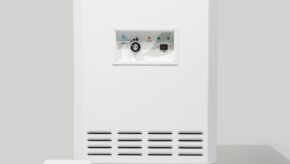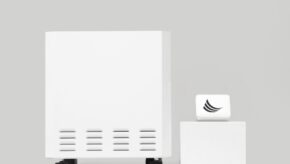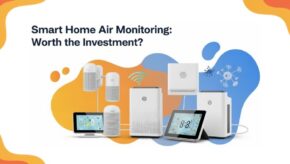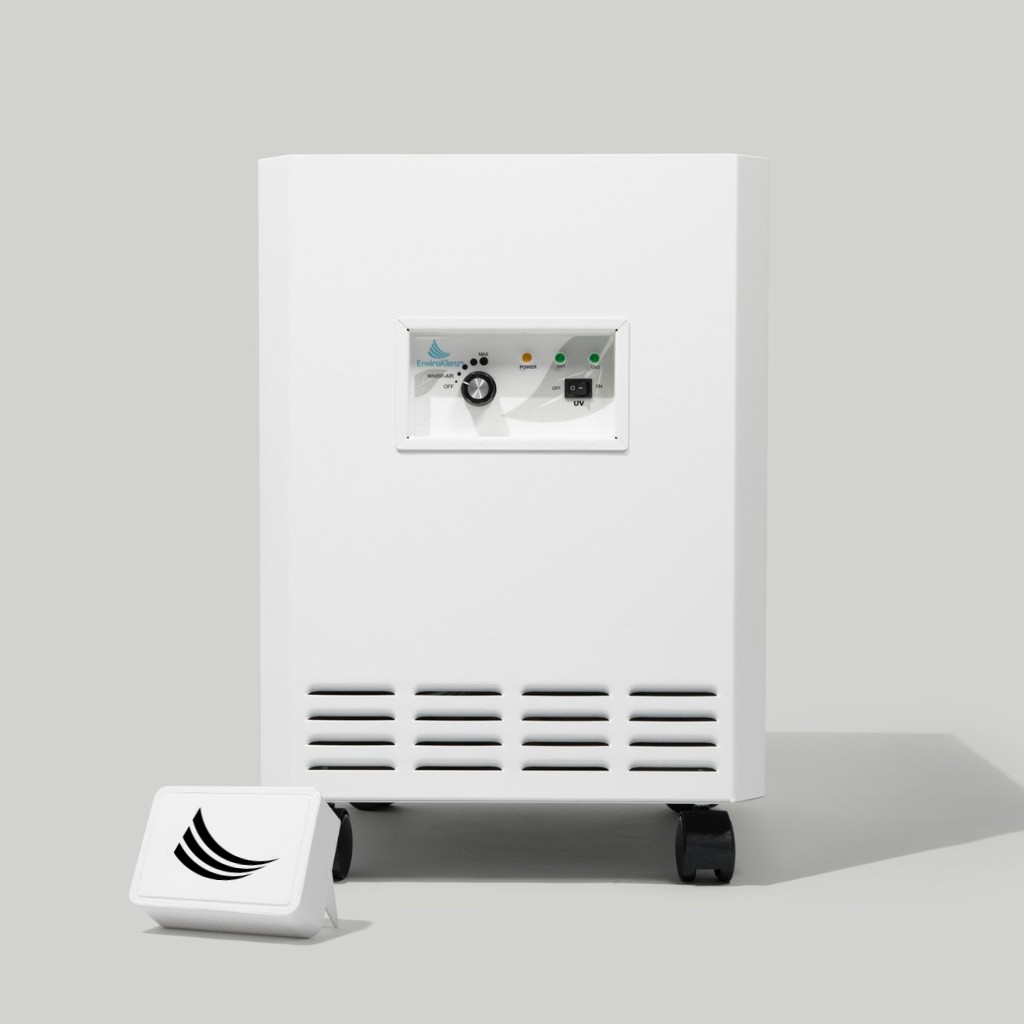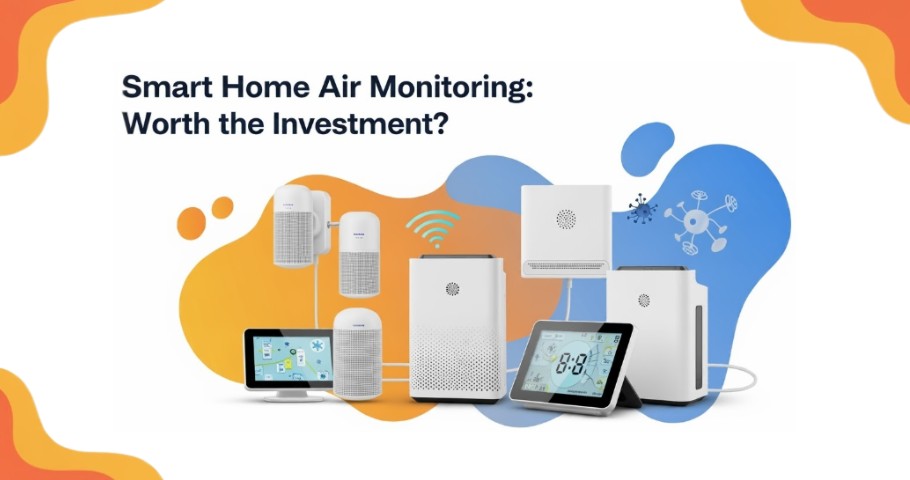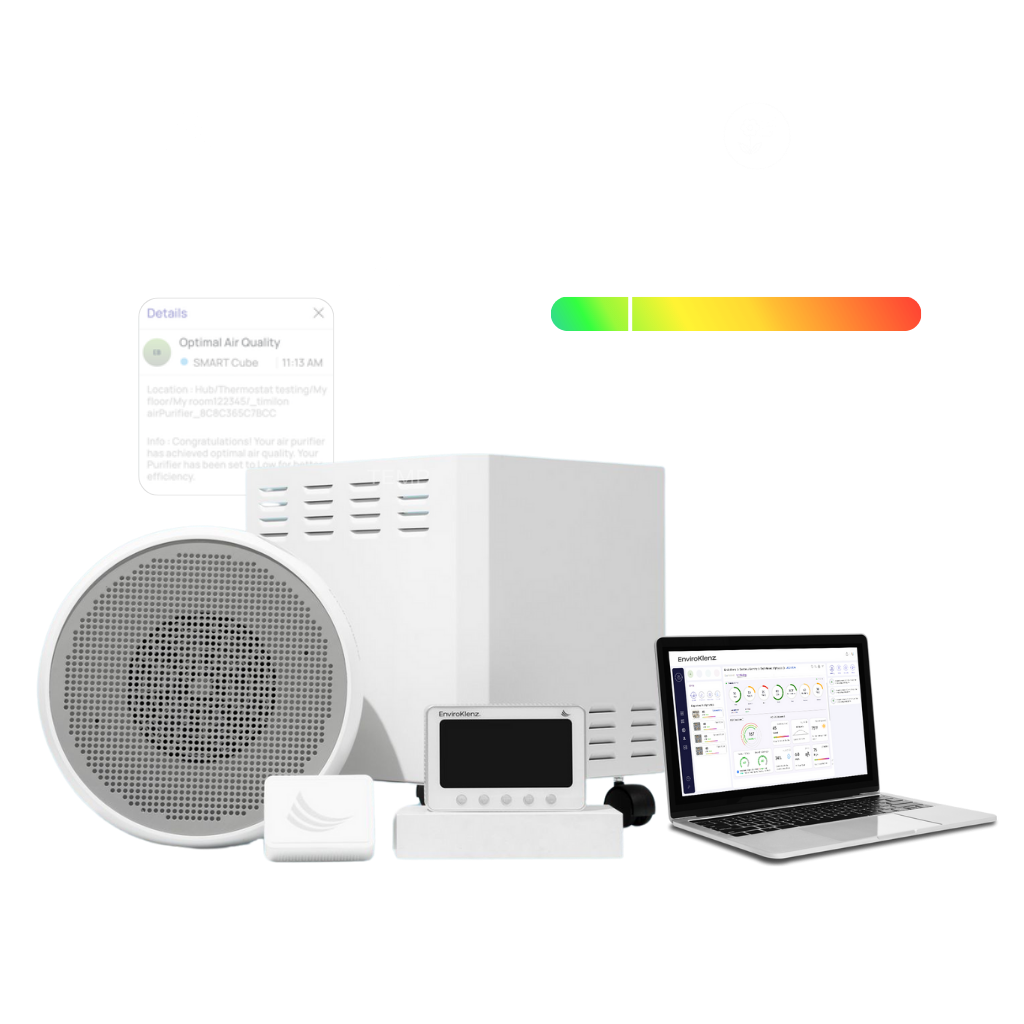Indoor air quality (IAQ) directly impacts the health and productivity of building occupants. According to the EPA, indoor air pollution ranks among the top five environmental risks to public health, costing $150 billion annually in medical expenses and lost productivity. Despite these risks, many buildings lack real-time monitoring systems that could help manage and improve IAQ.
Without proper monitoring, pollutants like PM2.5, VOCs, and CO2 can accumulate, contributing to sick building syndrome, where occupants experience respiratory issues, fatigue, and discomfort. Monitoring IAQ with SMART Science Technology ensures cleaner air and a healthier environment. In this blog, we explore the role of SMART Science in creating safer, more energy-efficient buildings.
Why IAQ Monitoring Matters: The Hidden Risks in Modern Buildings
1. The Health Risks of Poor IAQ
Many indoor environments contain more pollutants than outdoor spaces. The World Health Organization (WHO) reports that 92% of the global population is exposed to air pollution, and that many pollutants originate indoors. The American Lung Association highlights that exposure to PM2.5 can lead to asthma, lung cancer, and cardiovascular diseases. Further, this exposure is linked to 50,000 premature deaths in the U.S. annually.
Volatile organic compounds (VOCs)—released from building materials, cleaning products, and furniture—can cause headaches, dizziness, and respiratory irritation. Long-term exposure to VOCs is linked to serious health effects, such as liver and kidney damage.

2. The Financial Burden of Poor IAQ on Businesses
Poor IAQ not only harms health but also reduces workplace productivity. Studies show inadequate IAQ lowers productivity by 6-9%, costing U.S. businesses about $25 billion annually in lost output. Moreover, employees in poorly ventilated buildings report more illnesses and absenteeism, with 35% more sick days.
Improved IAQ also results in significant energy savings. Buildings with effective IAQ monitoring systems reduce HVAC-related energy costs by up to 30% through optimized performance.
How SMART Science Revolutionizes IAQ Monitoring
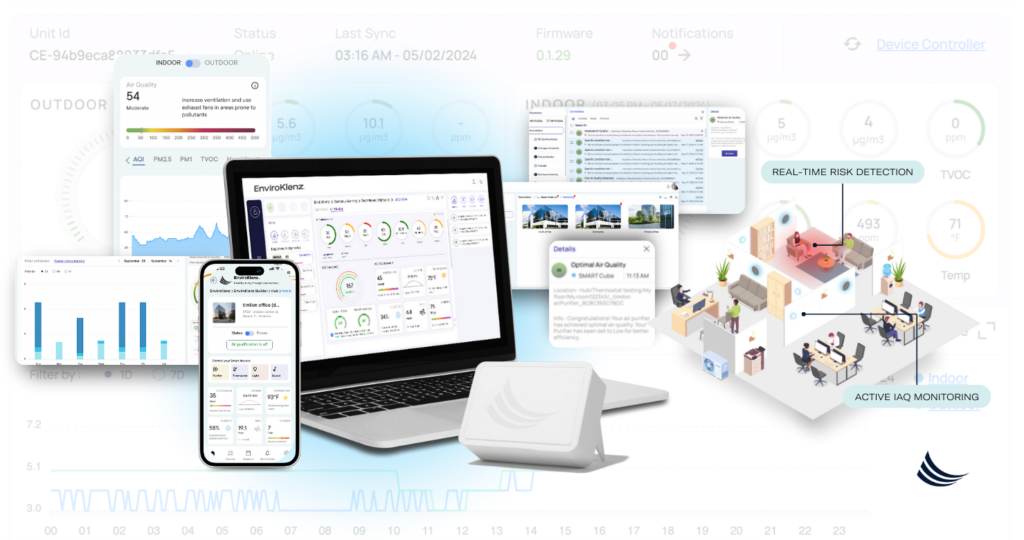
Real-Time IAQ Monitoring with SMART Science Technology
Traditional air quality management often relies on static systems that don’t respond to real-time changes in pollutant levels. SMART Science Technology changes this by offering real-time IAQ monitoring through systems like the SMART Cube and SMART Mount™. These devices track key pollutants, including PM1, PM2.5, CO2, and VOCs, providing actionable data that allows building managers to make immediate adjustments.
In buildings using SMART Science Technology, IAQ monitoring has reduced the concentration of harmful airborne pollutants by up to 60%, resulting in cleaner, safer environments for occupants. For example, a recent public transit case study showed that after implementing SMART Science, CO2 levels dropped by 65.8%, and TVOC levels decreased by 78.4%. This provided a healthier atmosphere for passengers and staff.
Compliance with ASHRAE 241 Standards for IAQ
Meeting regulatory standards for air quality, such as those set by ASHRAE 241, is becoming increasingly important for modern buildings. SMART Science Technology helps buildings align with these standards by continuously monitoring air quality and ensuring that levels of harmful particles like PM2.5 and VOCs are kept within safe limits.
Adhering to these standards not only helps protect occupant health but can also reduce HVAC operational costs by up to 30%, making the building more energy-efficient long-term.
The Benefits of Proactive IAQ Management
1. Healthier Environments for Occupants
Better IAQ has proven health benefits. A study from the Harvard T.H. Chan School of Public Health found that improving indoor air quality reduced sick days by 35% and enhanced cognitive performance. Occupants in buildings with high IAQ also reported fewer respiratory issues and headaches, leading to increased workplace productivity.
2. Energy Efficiency and Sustainability Gains
Optimizing IAQ also contributes to sustainability goals. With real-time IAQ monitoring, HVAC systems can be fine-tuned to reduce energy consumption by 20-30% annually. In one commercial building, using SMART Science resulted in $200,000 in annual energy savings.
Businesses that prioritize IAQ can also pursue sustainability certifications such as LEED or WELL, which reward air quality improvements and energy efficiency.
Why Choose SMART Science for IAQ Management?
The SMART Cube and SMART Mount: Comprehensive IAQ Solutions
The SMART Cube and SMART Mount™ systems are equipped with patented FAST-ACT technology, which eliminates harmful particles like PM2.5, VOCs, and CO2 in real-time. These systems also provide cloud-based reporting, allowing building managers to monitor air quality remotely and make informed decisions about HVAC system adjustments.
These systems integrate seamlessly with existing HVAC frameworks, making them adaptable for both new constructions and retrofits. Whether it’s a commercial office, school, or public transit system, SMART Science provides comprehensive, data-driven IAQ management solutions.

Take Charge of Your Building’s Air Quality with SMART Science Technology
Implementing SMART Science Technology has consistently demonstrated the ability to solve real-world IAQ issues, providing measurable improvements in both air quality and operational efficiency. For example, in a Private Hospital in Iowa, the introduction of SMART Science systems resulted in significant reductions in harmful airborne pollutants. Over a five-day period, PM2.5 levels decreased by 76.2%, while TVOCs dropped by 98%. These reductions were critical in creating a healthier environment for patients and staff, directly improving comfort and reducing the risk of respiratory complications.
Similarly, SMART Science was implemented at a Public Works Facility to address issues with VOCs and CO2. Within the first month, the facility recorded an 85.5% reduction in TVOCs and a 65.8% decrease in CO2 levels. These improvements not only enhanced the air quality for employees but also optimized the facility’s operations. This demonstrates how real-time IAQ monitoring can proactively prevent exposure to dangerous pollutants.
By implementing SMART Science Technology, businesses and public facilities alike have seen clear improvements in air quality and the health of their occupants. The data shows how reducing exposure to contaminants like PM2.5 and VOCs can mitigate the risks associated with poor IAQ, including respiratory illnesses, increased absenteeism, and lower productivity. More importantly, efficient IAQ monitoring systems also contribute to operational cost savings and improved energy efficiency. This is accomplished by optimizing HVAC usage, reducing the strain on systems, and ensuring long-term sustainability.
How SMART Science Solves Real-World IAQ Challenges
EnviroKlenz SMART Science systems provide businesses with the ability to take control of their IAQ, which ensures that harmful pollutants are minimized while maximizing the performance of building systems. Investing in proactive IAQ management now will lead to healthier indoor environments, more productive workplaces, and significant operational cost savings.
Contact an EnviroKlenz IAQ Specialist today to discover how our solutions can protect your building’s occupants, improve your air quality, and deliver measurable financial and health benefits.
EnviroKlenz® Medical Disclaimer:
“Any information that is provided on this website is not for the use by any commercial or personal entity without expressed written consent of the blog author. The material and statements illustrated within this blog are not intended to diagnose, treat, cure, or prevent any diseases or medical conditions. Nor does the author in any way guarantee or validate the validity, totality, or efficacy of any claims and will therefore not be held responsible for the content of any claims. Always consult your medical physician for any specific medical advice or recommendations.”
